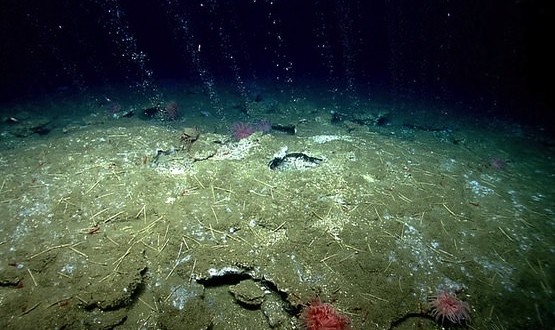The Atlantic Ocean floor off the U.S. East Coast has over 500 methane vents, a new study has found.
The study, conducted by researchers at the Mississippi State University, shows that large amount of methane leaking from the seafloor might be contributing to global warming.
A new research found that plumes of bubbles streaming from hundreds of newly found sea-floor seeps between North Carolina and Massachusetts are likely to contain methane and could be adding as much as 90 tonnes of the planet-warming gas to the atmosphere or overlying waters each year.
Investigators said an estimated two-thirds of the emissions emanate from sediments at depths where methane-rich ices may be decomposing due to warming waters along the ocean bottom.
Effects of these plumes on climate and ocean chemistry are not yet clear, but could extend well beyond the plumes themselves, ‘nature.Com’ reported.
The bubble streams showed up on sonar scans of the sea floor taken between September 2011 and August 2013 during oceanographic expeditions ranging from Cape Hatteras in North Carolina to Georges Bank off Cape Cod.
Researchers investigated data covering a 94,000-square-kilometre arc that includes the edge of the continental shelf and the steep slope just seaward of it, co-author Adam Skarke, a geologist at Mississippi State University in Starkville said.
Within a distance of about 950 kilometres, the team found about 570 bubble plumes – an astounding number considering that scientists had previously reported only a handful in the region, he said.
Skarke said that although some of the plumes extended hundreds of metres above the ocean floor, the bubbles emanating from deep-water sources typically dissolved into the sea long before they could breach the surface.
Agencies/Canadajournal
 Canada Journal – News of the World Articles and videos to bring you the biggest Canadian news stories from across the country every day
Canada Journal – News of the World Articles and videos to bring you the biggest Canadian news stories from across the country every day



